3 Instagram Ads Reports That Simplify Your Marketing
HamedP
June 2, 2023

Managing a successful Instagram marketing campaign can be overwhelming, especially when it comes to understanding your audience, tracking ad performance and optimising your strategies. However, you don’t have to go through this process alone.
We’ve got you covered! Our team offers three in-depth Instagram Ads reports that can take the hassle out of your marketing efforts and streamline your campaigns.Wasting too much time trying to make sense of your Instagram campaigns? Looking for a faster and easier way to check Instagram ad performance?
In this article, you’ll discover three built-in reports you can use to refine your campaigns.
- 1: Instagram Ads ROI Report
- 2: Instagram Ads Lead Generation Report
- 3: Instagram Ads Engagement Report
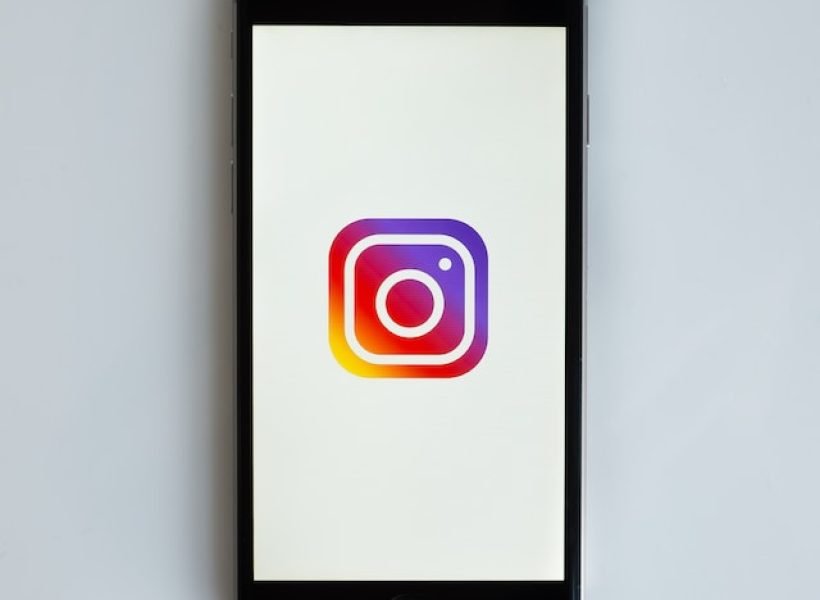
1. Instagram Ads ROI Report
Every time you run a report on how well your Instagram ads are doing. It shows how much money you have made or lost from your ads over the last few months. We looked at different things like how many people clicked on your ad, how many bought something because of it, and how much it cost to get each click. We have done a lot of work to make sure the information is correct.
Why You Should Set Up This Instagram Ads Report
Instagram Ads reports are important for improving your advertising strategy on the platform. They help you understand how your ads are performing. You can see which ads are performing well and which are not. You can also see how much money you’re spending compared to how much you’re making.
- Adam Johnson
By tracking engagement rates, you can find out what type of content your audience likes. Creating an Instagram Ads report can help you make better decisions about your ads and content. This can lead to a better return on investment (ROI) and more success on Instagram. Don’t forget to create your Ads Report today!
What to Do Before Creating This Report
To write a good report, do these 5 things:
1. Know who you’re writing for and why, so you can choose what information to use and how to present it.
2. Decide what you’re going to include in the report and how much you’re going to go into each area. Will it be a summary or an in-depth analysis?
3. Get accurate and relevant data and information from good sources.
4. Present everything in a way that makes sense and is easy to understand.
5. Check and correct mistakes so that your report is clear and to the point. Follow these steps to write a great report for your audience.
To ensure your pixel is working correctly, click the Open in Events Manager button. Go to the Diagnostics tab to review and resolve active issues. If the Events Manager reports that your pixel hasn’t generated any trackable events recently, go to the Test Events tab to run a quick test.
How to Check Instagram Ads ROI Metrics
Track Instagram ad ROI metrics by setting up conversion tracking and using Ads Manager to monitor CPC, CTR and conversion rate. Adjust campaigns accordingly and continue testing to maximise ROI and meet business goals.
Use the search bar to find and select the key metrics for the report. Start with Results and Cost per Result, which use your campaign goal to measure results. Next, add Amount Spent to monitor the total amount spent on the campaign over a given period of time.
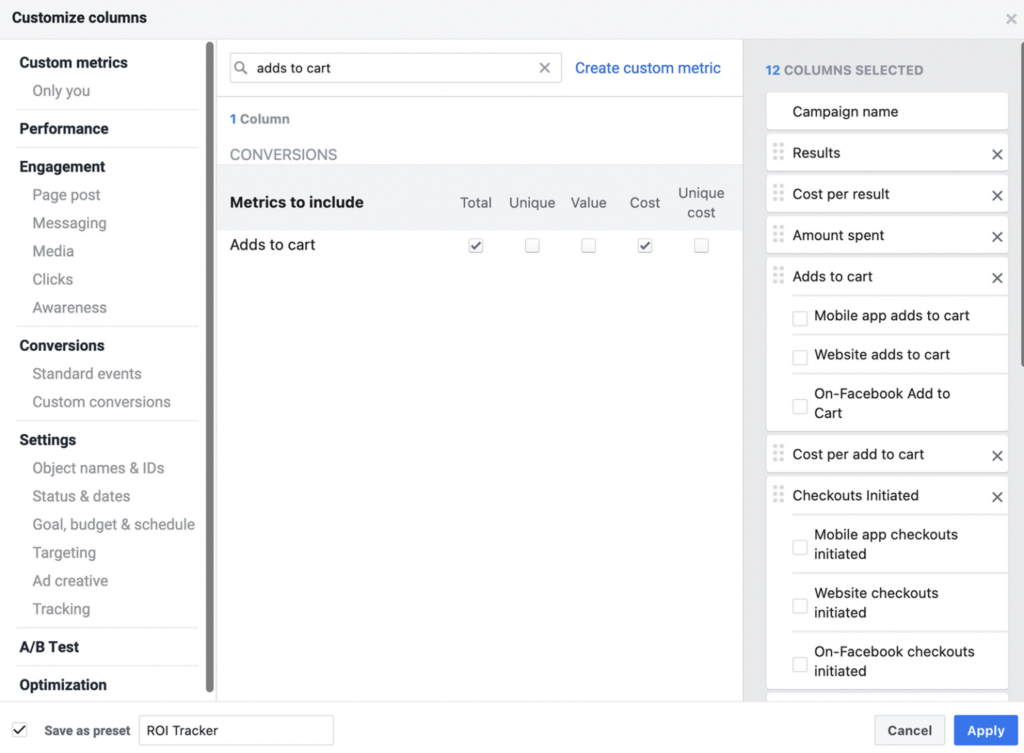
Then add metrics that cover the entire purchase process, including Add to Cart (total and cost), Checkout Initiations (total and cost), Site Purchases, Purchases (value and cost), and Purchase ROAS (total). Uncheck any boxes that separate metrics by website or mobile app to simplify the report. Drag and drop the columns so that they appear as follows:
Results
Cost per result
Amount spent
Adds to basket
Cost per basket
Checkouts initiated
Cost per checkout initiated
Purchases made
Cost per purchase
Purchases Conversion Value
Purchase ROAS
Click on the ‘Save as default’ box in the bottom left hand corner of the window and give the report a descriptive name such as ROI Tracker. Finally, click the blue Apply button to view your results. Now that you’ve saved the column preset, you can select it from the Columns drop-down every time you open Ads Manager.
How to Use the Instagram Ads ROI Report
Select the Instagram campaign you want to analyse, and set the timeframe you want to review. Then, scroll to the right to see a snapshot of the customer journey from Adds to Cart to Checkouts Initiated to Purchases. In most cases, you’ll see far more Adds to Cart than Purchases, with Checkouts Initiated somewhere in the middle.

What’s a good ROAS for an Instagram advertising campaign? Any number above 1 indicates that the campaign has a positive outcome; it’s generating more value than you’ve invested. But ROAS doesn’t take into account the other costs of doing business, such as materials, shipping and marketing. That’s why most Instagram marketers aim for a ROAS of 4 or higher.
To benchmark your ROAS and find out what’s good for your business, click the Reports button in Ads Manager and select Export Table Data. Then select Export to Ads Reporting and choose Trend Report to visualise your data. Now you can see how your ROAS has changed over time and whether it’s trending up or down.

Is the ROAS for your Instagram campaign higher than you’d hoped, or is it trending upwards? Your campaign is on the right track.
If it’s the opposite, and your ads have moved beyond the learning stage, it’s a good idea to tweak the campaign. For example, retargeting people who have already visited your site, interacted with your ad or even made a previous purchase can increase your ROAS and improve your return.
2. Instagram Ads Lead Generation Report
While an ROI report is ideal for keeping an eye on your bottom line, a leads report is great for focusing on the middle of your funnel. If you’re using Instagram ads for lead generation, you’ll want to add this custom report to your toolkit.
Why You Should Set Up This Instagram Ads Report
With a lead generation report, you can see how people interact with your ads or website and whether they make micro-conversions before becoming customers. If you’re using the newer version of Ads Manager with ODAX, this report works well for leads and engagement goals. If you are using the older version of Ads Manager, this report will work well for your lead generation and conversion goals.
What to Do Before Creating This Report
Before you set up this report or launch your Instagram campaign, make sure you’ve configured conversion events correctly. Open the Events Manager, select your pixel and click the blue Configure Web Events button.
If you haven’t updated the event priority recently, drag and drop your eight conversions, putting the most important one at the top. For example, if you want to target lead generation, you could add Lead, Complete Registration or Subscribe to the list.

How to Check Instagram Ads Lead Generation Metrics
Now that you’ve got the basics set up, you can use a workflow similar to the one above to create a custom lead generation report. Open Ads Manager, click on the Columns drop-down menu and select Customise Columns at the bottom of the list.
Starting with the ROI Tracker report settings above, it’s easy to add metrics focused on website clicks and conversions. Use the search bar to find and add link clicks, cost per click (CPC) and click-through rate (CTR). Then add the conversion metric (total and cost) you’ve targeted in the campaign, such as leads or completed registrations.
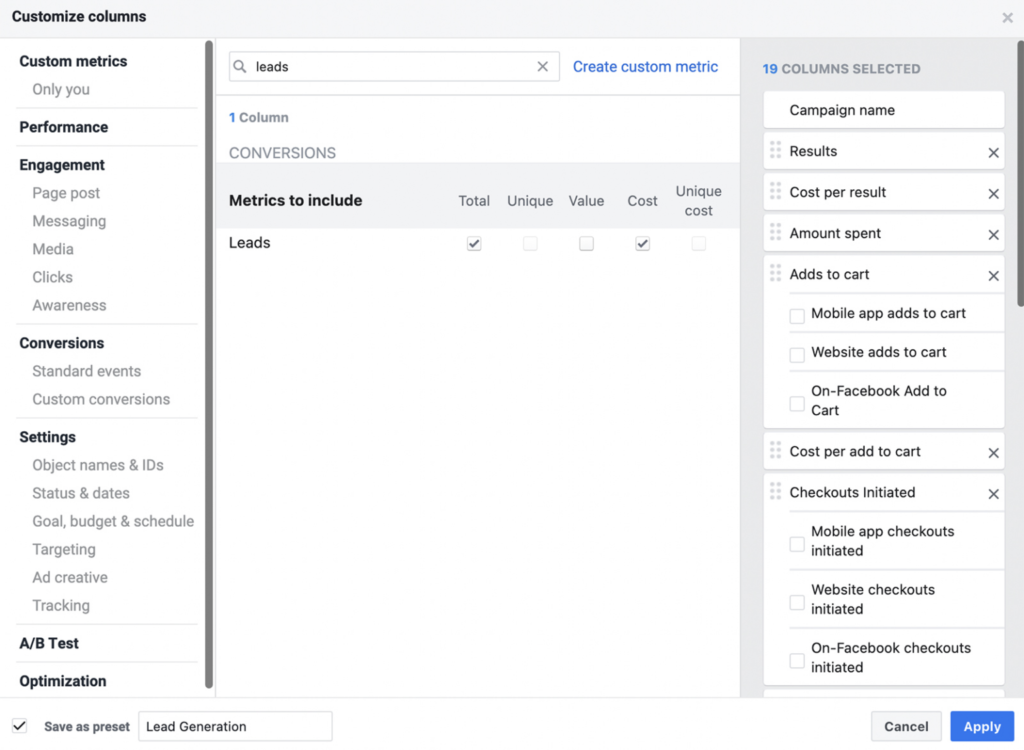
Drag and drop the columns so that click and conversion metrics appear above purchase metrics. Here’s a full list of what to include:
Results
Cost per result
Amount spent
Link clicks
CPC
CTR
Leads or registrations converted
Cost per lead or registration completed
Adds to basket
Cost per basket
Checkouts initiated
Cost per checkout initiated
Purchases Completed
Cost per purchase
Purchases Conversion Value
Purchase ROAS
Check the Save as preset box and name the report Lead Gen or something similar. You can now use this report to analyse your lead generation campaigns with one click.
How to Use the Instagram Ads Lead Generation Report
With this report you can quickly see if people are successfully moving through your sales funnel. First, look at link clicks and CTR to see if people are responding positively to your ad and clicking through to your site.

What CTR should you be aiming for? Across all industries, the average CTR for Instagram ads is 0.22%. You can benchmark your brand’s CTR using figures from other successful campaigns you’ve run for your business.
Using the workflow from the ROI report, you can also click to visualise your lead generation analytics over time. Click to export the tabular data to Ad Reporting, then switch the view to Trend. Now you can see how link clicks, CTR and/or CPC are trending.
To continue analysing your lead progress, switch back to column view and scroll through the steps. Are people clicking through to your site in droves, but then failing to convert? Retargeting engaged prospects with a different version of your ad can help increase your lead conversion rate.

Alternatively, consider rethinking your audience targeting. Apple’s restrictions on third-party app tracking make it increasingly difficult to use website analytics to build audiences. Instead, create custom audiences based on in-app metrics, such as people who’ve interacted with your ads.
To get better results from your Instagram lead generation ads, you can also use more ad placements, especially if you’re only using Instagram Explore and feed ads. Stories and reels, for example, tend to generate more clicks because they’re less saturated than other placements.
3. Instagram Ads Engagement Report
When you’re focused on maximising the return on your Instagram campaigns, it’s easy to assume that you only need the two reports above. However, analysing engagement can also help you measure the health of your ads, which is essential for strong campaign performance.
Why You Should Set Up This Instagram Ads Report
Even if engagement isn’t the main goal of your Instagram campaign, ads that make a positive impression tend to generate a lot of interactions. With an engagement report, you can see how people are interacting with your paid content and identify your most successful ads.
This custom report provides helpful insights, no matter what goal you choose for your Instagram campaign. Once you’ve set it up, you can use it to analyse performance at the ad level and then decide how to optimise your campaigns.
How to Check Instagram Ads Engagement
To set up this custom report, open Ads Manager and click the Columns button. Select Customise columns, then browse for the metrics you want to add.
Start with the first few metrics from the lead generation report, including Results, Cost per Result, Amount Spent, Link Clicks, CPC and CTR.

Then click Engagement in the left-hand menu and add post-level engagement metrics so you can assess the value of each interaction. Add these to your report in addition to the metrics above:
Post reactions
Post Comments
Post shares
Cost per post engagement
2-second continuous video plays
Cost per 2-second continuous video ad
ThruPlays
Cost per ThruPlay
Video plays at 25% view-through
Video plays at 50% speed
Video plays at 75%
Video plays at 95%
Video plays at 100% impressions
Give your report a name such as Ad Engagement. Then save it as a preset so you can reuse it efficiently.
How to Use the Instagram Ads Engagement Report
Go to the Ads tab in Ads Manager to see engagement at a more granular level. Are some ads getting tons of shares or dozens of positive comments?
Both of these results indicate that your ads are resonating with your audience. If you can identify what people like about the ad – such as the creative, messaging or offer – you can use similar elements in other ads or campaigns.

Are some ads getting virtually no engagement? Before you consider turning them off and allocating the rest of the ad set budget to other ads, take a look at the lower-funnel metrics first.
Scroll to the left to take a closer look at CTR and CPC. Then use the ROI or lead generation report to take a closer look at leads or purchases. If some are generating virtually no activity at any stage of the customer journey, it’s a good idea to turn them off or test new iterations.
It’s also helpful to take a closer look at the video views metrics in this custom report. Because you can create custom audiences based on this metric, ads that generate a lot of video views can add value to campaigns further down the funnel.
Note that you can use the Breakdowns button in Ads Manager to break down results by placement. Although Ads Manager doesn’t show breakdowns for web-based metrics like leads and conversions, it can show breakdowns for in-app metrics like engagement. This can help you identify which placements are working best for your ads and further improve performance.
Pro tip: Want to share your findings with colleagues? Select one of the custom reports you created and choose the timeframe and campaign parameters. Then click Export table data and save it as a simple spreadsheet or pivot table.
Alternatively, select Share Link from the Reports menu and share the URL with your colleagues. Note that only people with access to your Ads Manager account will be able to use the link to log in and view the results.
Conclusion
With these three custom reports, you can analyse the performance of your Instagram ads with just a few clicks. Save or further customise these reports to efficiently review your ads. Then tweak them to improve performance or scale them for even better results.
5 Responses
Leave a Reply Cancel reply
Recent Post
Dont Hesitate To Contact Us
We’re here for you. Need help or have a question about our services? Contact us anytime
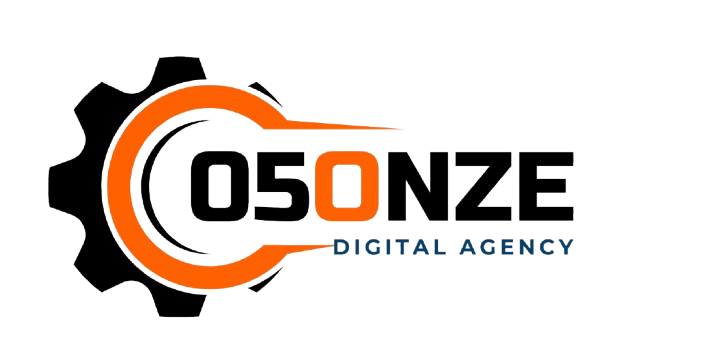
Nice post! You have written useful and practical information. Take a look at my web blog QH6 I’m sure you’ll find supplementry information about Airport Transfer you can gain new insights from.
Your writing style is cool and I have learned several just right stuff here. I can see how much effort you’ve poured in to come up with such informative posts. If you need more input about Thai-Massage, feel free to check out my website at UQ9
With your post, your readers, particularly those beginners who are trying to explore this field won’t leave your page empty-handed. Here is mine at QN5 I am sure you’ll gain some useful information about Cosmetics too.